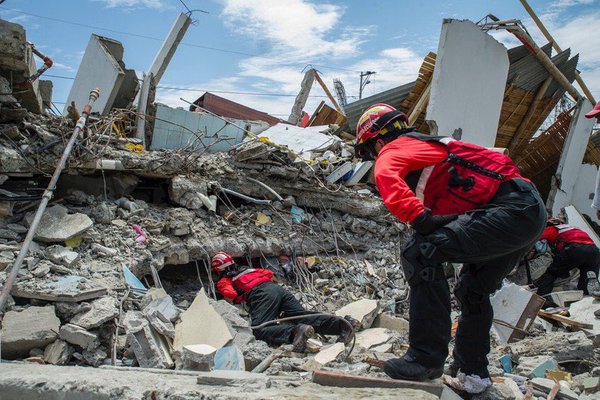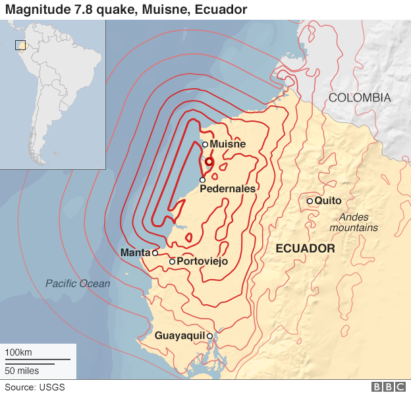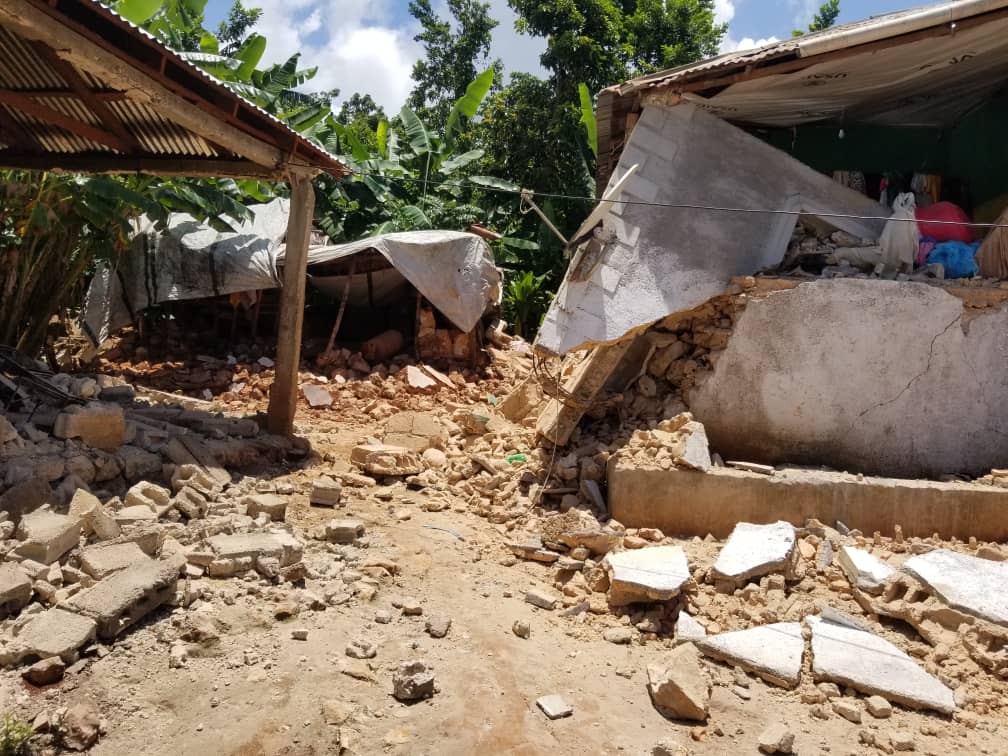
Last updated:
Ecuador Earthquake

Overview
A 7.8 earthquake occurred April 16, 2016 in northwestern Ecuador, near Muisne.
Nearly 600 people have been reported dead, about 36,000 were injured, and more than 30,000 were displaced.
Several landslides have occurred in the affected area as a result of the earthquake, further complicating response and damaging roads and transportation networks.
The cost of rebuilding is estimated at more than $3 billion, a huge price tag in an oil-producing country already slumping economically after a dip in global crude oil prices.
Sources: BBC News, Reuters, ABC News, ACAPS, responding INGOs.
A 7.8 earthquake occurred April 16, 2016 in northwestern Ecuador, near Muisne. Nearly 600 people have been reported dead, at least 36,000 were injured, and more than 30,000 were displaced.
Background
Several landslides occurred in the affected area as a result of the earthquake, further complicating response and damaging roads and transportation networks.
The earthquake caused an estimated $3 billion in damages and losses, a huge price tag in an oil-producing country already slumping economically after a dip in global crude oil prices.
Many responding NGOs note that there was significant disruption to social fabric — the things that connect people to people, such as roads, jobs and business, schools and more.
Key facts and stats

- Ecuador has suffered seven earthquakes of magnitude 7.0 or higher since 1900.
- 402,000 children (25%) are chronically malnourished and 37,000 acutely malnourished
- More than 500 people have died from the earthquake and about 4,000 have been reported injured. Search and rescue efforts are ongoing.
- A state of emergency was declared in six provinces in Ecuador.
- Fund innovative building programs and education, particularly in resource-poor countries.
- Transfer knowledge from prepared communities to those at risk.
- Invest in water system initiatives.
Contact CDP
Recovery updates
If you are a responding NGO or a donor, please send updates on how you are working on recovery from this disaster to Tanya Gulliver-Garcia.
Donor recommendations
If you are a donor looking for recommendations on how to help with disaster recovery, please email Regine A. Webster.
Philanthropic and government support
Donors
Global Giving has launched an Ecuador Earthquake Relief Fund.
UPS Foundation is providing financial support for relief efforts: $75,000 in emergency funds for UNHCR; CARE has activated $25,000 of its UPS Emergency Relief Fund for water, sanitation, and hygiene purposes; the World Food Programme (WFP) has activated $25,000 to procure food. The UPS Foundation will continue to work with UN agency partners who are conducting assessments and will evaluate transportation and warehousing requests.
NGO Response
Airlink has activated its’ response plan in support of NGOs responding to Ecuador support. Airlink is working to transport relief teams and critical supplies to the affected area.
All Hands has an assessment team on the ground and is working to form an response plan.
AmeriCares has deployed two emergency response teams and sent four shipments of medicines and supplies. Work has also included water purification and diabetes patient support.
Clean the World is responding with soap and hygiene kits in affects areas to improve health and prevent the spread of disease.
Direct Relief is working with the Ecuador Ministry of Public Health to assess current needs. Direct Relief has made available more than $42 million in medical material inventory to help people affected by the earthquake.
Ecuadorian Red Cross mobilized quickly, and is coordinating relief efforts throughout the area. The global and American Red Cross have deployed assessment teams and specialists to assist the relief and recovery efforts.
Handicap International has an assessment team in the affected area, planning a long-term and coordinated intervention for those injured and in need of rehabilitative care.
Heifer International has worked for several decades in Ecuador, helping small-scale farmers improve the quality and production of their agricultural, handicraft, and tourism-related products. This includes working in the farm- to-market processing of milk and other dairy products, corn flour, honey, seafood and a variety of crops. Heifer International is also working with fisheries in the Ecuador-earthquake affected area.
Mercy Corps has an emergency response team on the ground to conduct a rapid needs assessment. The team is working in coordination with Mercy Corps staff already in the area and will develop an immediate, mid-term, and long-term response plan.
Oxfam International has deployed an assessment team from the region to determine an overall response. A shipment of aid, including hygiene and water supplies to the affected area has also been coordinated.
Plan International has a long history of work in Ecuador. During the first 90 days, Plan International will distribute food, household items, blankets and mattresses, and kits for personal hygiene and purifying water. The primary focus will be on keeping children safe and protected, setting up child-friendly spaces and temporary learning centres where girls, boys and adolescents can relax and take part in sports, music, art and other playful activities that will help them regain a sense of normality.
Project Hope is sending a disaster relief team to Ecuador to assess health needs and develop a coordinated plan of action. Once a plan is in place, Project Hope will work with partners to assist in recovery.
Save the Children is providing families with household kits, establishing child-friendly spaces for children who have lost their homes, providing community water sources; integrating child protection into response activities; and working with local government to support schools.
SOS Children’s Villages has a long history of working with orphans and homeless children in Ecuador. The organization is currently providing aid through the distribution of food and water after this most recent disaster. SOS Children’s Villages also plans to provide temporary shelter, particularly focusing on the need of safe spaces for the children they have historically served.
World Food Program has organized food assistance kits for distribution throughout earthquake-affected areas. WFP has also mobilized an emergency team to the quake-affected areas to assess the humanitarian and food security situation.
World Vision is responding in Esmeraldas and Manabi provinces to provide emergency kits for affected families, temporary shelter, and child friendly spaces.
We welcome the republication of our content. Please credit the Center for Disaster Philanthropy.
Resources

Earthquakes
Striking without warning, earthquakes often are among the most devastating disasters. Caused by the movement of plates along fault lines on the earth’s surface, earthquakes often leave a monumental path of instant death and destruction.

Is your community prepared for a disaster?
Explore the Disaster Playbook
